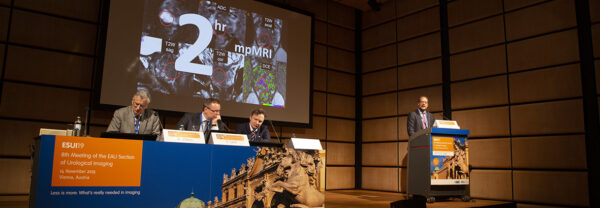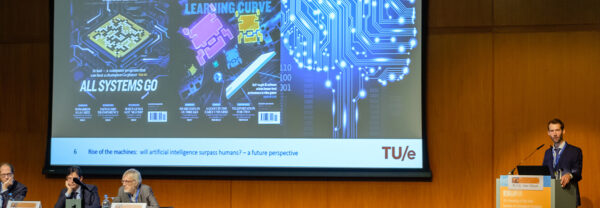ESUI19: PSMA PET updates on rationale use, RGS and tracers
New developments on radioguided surgery, tracers, and rationale use of the prostate-specific membrane antigen positron emission tomography (PSMA PET) were explored today during the session “The PSMA PET Corner” of the 8th Meeting of the EAU Section of Urological Imaging (ESUI19).

In his lecture “Does it always have to be PSMA-PET? Suggestions towards a rationale use”, Assoc. Prof. Tobias Maurer (DE) stated that PSMA PET is potentially the most valuable in early biochemical recurrence (BCR) after radical prostatectomy (RP) and in primary high-risk prostate cancer (PCa).
According to Prof. Maurer, “Prospective data on oncological follow-up is still missing and eagerly awaited. In addition, we need a comparison to conventional standard imaging. We also need implementation of quality assurance measures for different PSMA PET examinations.”
Prof. Maurer proceeded to present his other lecture in the session which was entitled “Radioguided surgery. How I do it”. He enumerated the preoperative requirements for PSMA radioguided surgery (RGS):
- Certification of the operating room (OR) and the staff for working with radiopharmaceuticals
- Is the OR supervised during the procedure?
- Medical personnel needs to be monitored for radiation exposure
- Contaminated materials have to be collected and measured for radioactivity
- Documentation
Prof. Maurer also introduced the prospective, multicentre study ProSTone which stands for “Early Prostate cancer recurrence with PSMA PET positive unilateral pelvic lesion(s): is one-sided salvage extended lymph node dissection enough?”. He stated that in the next 4 to 5 years, the study will open for the inclusion of patients.
In addition, Prof. Maurer mentioned that the robotic minimally-invasive PSMA-RGS may be available next year.
Following Prof. Maurer’s presentation was Dr. Herrmann’s lecture “Which tracer makes the race?”, which was centred on the comparison among 3 tracers 99mTc-PSMA, 68Ga-PSMA and 18F-PSMA.
99mTc-PSMA has lead compound MIP 1404. The tracer does not require cyclotron nor a PET scanner. The data is available for primary staging; BCR at low and very low prostate-specific antigen (PSA) levels; treatment response in metastatic PCa.
Dr. Herrmann also highlighted the Phase 2 Study of “99mTc-Trofolastat SPECT/CT to Identify and Localize Prostate Cancer in Intermediate- and High-Risk Patients Undergoing Radical Prostatectomy and Extended Pelvic LN Dissection.”
68Ga-PSMA has the PSMA-11 as its lead compound. The tracer is widely available with Kit technology. Approval from the Food and Drug Administration (FDA) is expected in 2020.
Data is available for primary staging, biochemical recurrence, impact of management data, and implementation in the EAU Guidelines.
18F-PSMA has the lead compounds DCFPyL and 1007. The tracer is a cyclotron product with high yields and distribution networks. Data is available for biodistribution, primary staging and BCR.
Dr. Herrmann concluded, “68Ga-PSMA is more commonly used at present. However, in the near future, it will be 18F-PSMA. Although both tracers are similar in terms of performance, 18F-PSMA differs in terms of scale of production and cost-effectiveness.”


